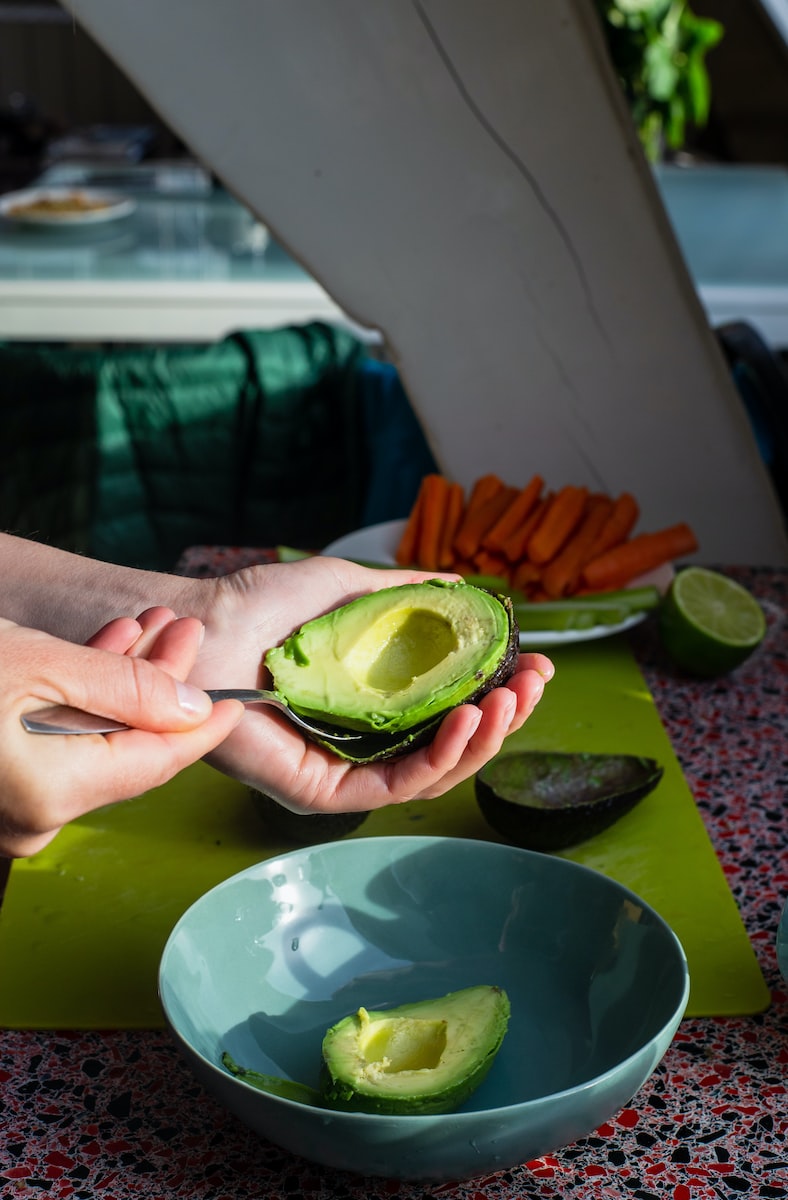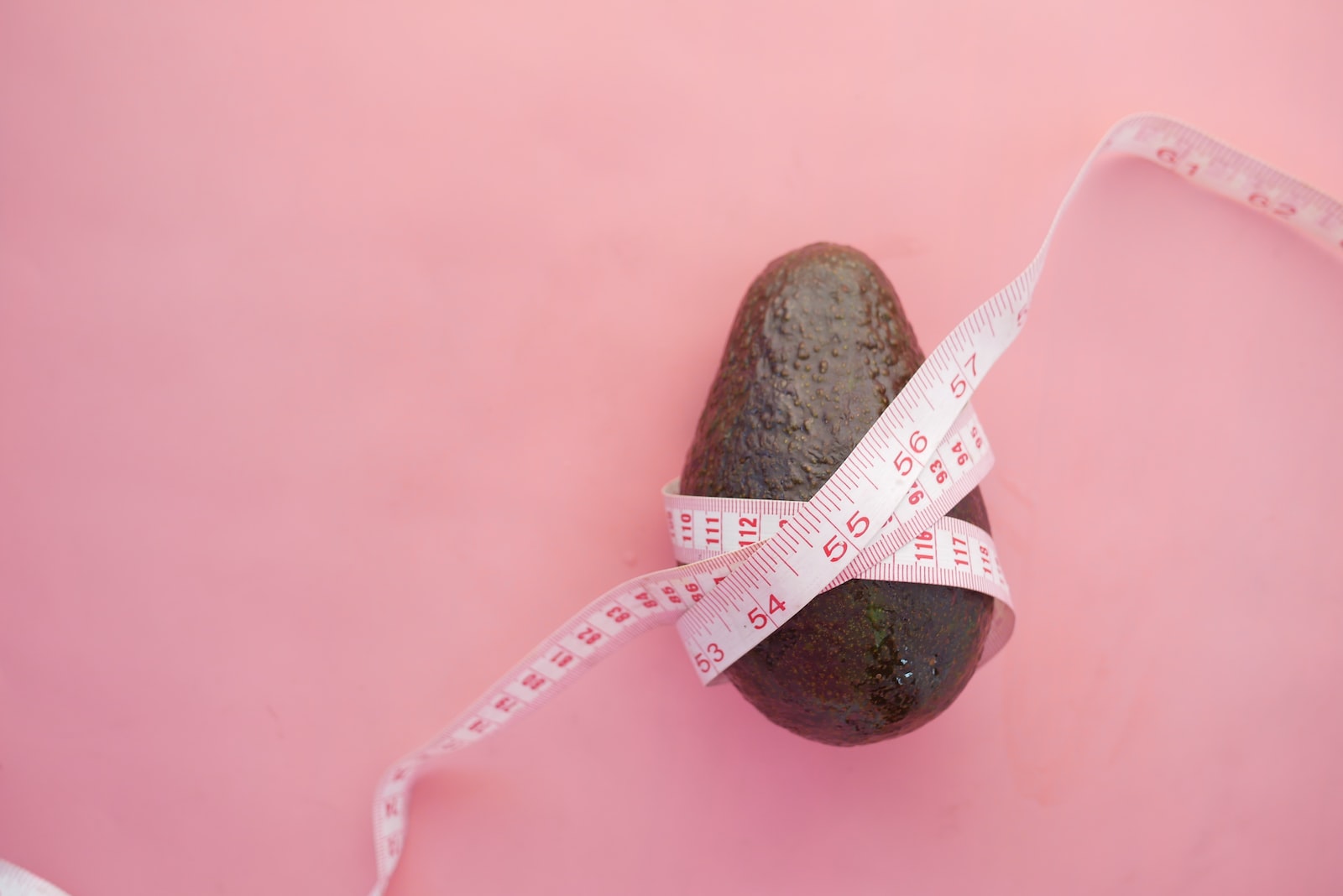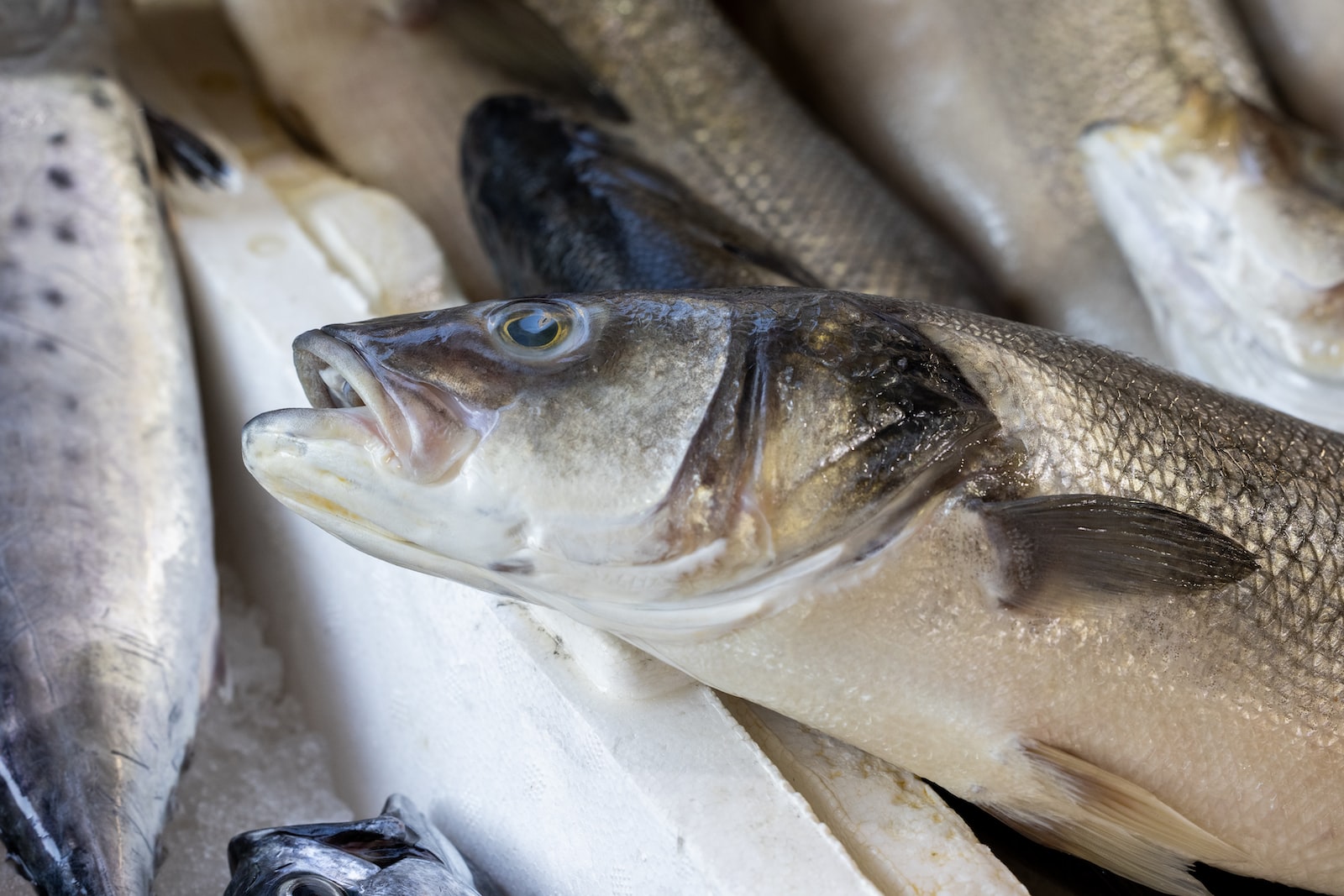The ketogenic diet, or “keto” diet, is a low-carb, high-fat diet that has gained popularity in recent years for its potential health benefits. This diet involves drastically reducing your carbohydrate intake and replacing it with fat. This puts your body into a metabolic state called ketosis, where it burns fat for fuel instead of glucose.
In this article, we will be discussing a keto diet plan for beginners. If you’re new to the keto diet, this plan will provide you with a step-by-step guide on how to get started, what to eat, and what to avoid.
First, we’ll cover the basics of the keto diet and why it has become such a popular diet in recent years. Then, we’ll dive into the details of the keto diet plan for beginners, including what foods to eat and what to avoid, how to calculate your macronutrient ratios, and tips for staying on track.
Whether you’re looking to lose weight, improve your energy levels, or simply improve your overall health, the keto diet can be an effective tool for achieving your goals. So let’s get started and take a closer look at the keto diet plan for beginners.
The Science Behind a Ketogenic Diet
The ketogenic diet is a low-carb, high-fat diet that involves reducing your carbohydrate intake and replacing it with healthy fats. The basic principle behind the diet is to put your body into a metabolic state called ketosis, where it burns fat for fuel instead of glucose.
When you drastically reduce your carbohydrate intake, your body begins to produce ketones. Ketones are small molecules that are produced in the liver from fat, and they serve as an alternative source of energy when glucose levels are low. In a state of ketosis, your body becomes more efficient at burning fat for fuel, which can lead to weight loss and other health benefits.
To achieve ketosis, you typically need to restrict your carbohydrate intake to less than 50 grams per day. This can be challenging at first, but there are many healthy sources of fat that you can include in your diet to help you reach your macronutrient goals.
One common misconception about the keto diet is that it is a high-protein diet. While protein is an important part of the diet, it is important to balance your protein intake with healthy fats and keep your carbohydrate intake low to achieve and maintain ketosis.
Another common misconception about the keto diet is that it is not sustainable or healthy in the long term. However, research has shown that the keto diet can be safe and effective for long-term weight loss and improving metabolic health. It’s important to work with a healthcare professional to make sure you’re getting all the nutrients your body needs while following a keto diet.
The keto diet works by putting your body into a state of ketosis, where it burns fat for fuel instead of glucose. This can lead to weight loss and other health benefits. While there are some misconceptions about the diet, research has shown that it can be a safe and effective tool for improving health and achieving weight loss goals.
How a Ketogenic Diet Helps You Lose Weight
The ketogenic diet can be an effective tool for weight loss due to the way it changes the body’s metabolism. When you consume a high-carbohydrate diet, your body is primarily burning glucose for fuel. However, when you reduce your carbohydrate intake and increase your fat intake, your body enters a state of ketosis and begins to burn fat for fuel instead. This can lead to weight loss because your body is using stored fat as a source of energy, which can reduce overall body fat.
Another way that the keto diet can lead to weight loss is through greater satiety and reduced cravings. Eating a high-fat, low-carb diet can help stabilize blood sugar levels and reduce hunger pangs. Additionally, healthy fats can help you feel fuller for longer periods of time, which can reduce the temptation to snack on unhealthy foods.
Several scientific studies have found that the ketogenic diet can be an effective tool for weight loss. A 2013 study published in the British Journal of Nutrition found that individuals following a ketogenic diet lost more weight and body fat than those following a low-fat diet. Another study published in the Annals of Internal Medicine found that individuals following a low-carbohydrate, ketogenic diet lost more weight than those following a low-fat diet over a 12-month period.
In addition to weight loss, the keto diet has been shown to have other potential health benefits, such as improving blood sugar control, reducing inflammation, and lowering the risk of certain chronic diseases.
It’s important to note that the effectiveness of the keto diet for weight loss may vary from person to person, and it’s important to work with a healthcare professional to ensure you’re getting all the nutrients your body needs while following the diet.
The keto diet can lead to weight loss by changing the body’s metabolism and increasing satiety, which can reduce overall calorie intake. Scientific studies have found that the keto diet can be an effective tool for weight loss and may have other potential health benefits. It’s important to work with a healthcare professional to ensure the diet is safe and effective for your individual needs.
Starting the Keto Diet? Here are 7 Tips You Need to Know
If you’re new to the ketogenic diet, it’s important to set yourself up for success. Here are seven tips to help you get started:
1. Decrease Carbs (but Eat More Veggies)
The ketogenic diet requires a significant reduction in carbohydrate intake. It’s important to limit your intake of grains, bread, pasta, and other high-carb foods. Instead, focus on incorporating low-carb vegetables such as leafy greens, cauliflower, broccoli, and zucchini into your diet. These foods are high in fiber, vitamins, and minerals and can help you feel fuller for longer periods of time.
2. Decrease Stress
Stress can negatively impact your health and can make it more difficult to stick to a new diet. Find ways to manage stress, such as exercise, meditation, or deep breathing. It’s also important to get adequate rest and prioritize self-care.
3. Increase Healthy Fats
The ketogenic diet is a high-fat diet, and it’s important to choose healthy fats such as olive oil, avocado, nuts, and seeds. These fats can help you feel fuller for longer and provide important nutrients for your body.
4. Increase Exercise
Exercise can help you achieve your weight loss goals and improve your overall health. Start with a moderate exercise routine, such as walking or yoga, and gradually increase the intensity over time.
5. Increase Your Water Intake
Staying hydrated is important on any diet, and the ketogenic diet is no exception. Aim to drink at least 8-10 glasses of water per day to help flush out toxins and keep your body functioning properly.
6. Maintain Your Protein Intake
Protein is an important nutrient for your body, and it’s important to maintain your protein intake while following the ketogenic diet. Choose high-quality sources of protein such as grass-fed beef, free-range chicken, and wild-caught fish.
7. Maintain Your Social Life
One of the challenges of any new diet is navigating social situations. It’s important to maintain your social life and find ways to enjoy meals with friends and family while staying true to your dietary goals. Plan ahead and bring your own keto-friendly snacks or dishes to share.
The ketogenic diet can be a powerful tool for weight loss and improving overall health. By decreasing carbs, increasing healthy fats, exercising, and managing stress, you can set yourself up for success. Remember to maintain a balanced diet that includes plenty of low-carb veggies, healthy proteins, and adequate hydration, and don’t forget to enjoy your social life along the way!
Tips for Beginners: Avoiding Common Mistakes
Starting a new diet can be challenging, and a ketogenic diet is no exception. To make the transition easier and set yourself up for success, it’s important to avoid common mistakes. Here are 10 mistakes that beginners often make when starting a ketogenic diet, along with advice on how to avoid them.
1. Not tracking your macros
One of the key principles of a ketogenic diet is keeping track of your macronutrient intake. Failing to do so can make it difficult to stay in ketosis and achieve your weight loss goals. Use a food tracking app to ensure you are meeting your daily fat, protein, and carbohydrate goals.
2. Not eating enough healthy fats
Healthy fats, like those found in avocado, olive oil, and nuts, are a crucial part of a ketogenic diet. Don’t be afraid to incorporate these foods into your meals and snacks to help keep you feeling full and satisfied.
3. Not eating enough vegetables
While a ketogenic diet is low in carbohydrates, it’s important to make sure you’re still getting enough vegetables. Green, leafy vegetables like spinach and kale are low in carbs and packed with nutrients.
4. Eating too much protein
Eating too much protein can actually kick you out of ketosis, so it’s important to balance your protein intake with healthy fats.
5. Not drinking enough water
When you’re on a ketogenic diet, it’s important to stay hydrated to avoid constipation and other negative side effects. Aim for at least 8-10 glasses of water a day.
6. Eating too many processed foods
Just because a food is low in carbs doesn’t mean it’s healthy. Processed foods can be high in sodium and other unhealthy additives, so it’s important to focus on whole, nutrient-dense foods.
7. Not getting enough electrolytes
As your body adapts to a ketogenic diet, it can be easy to become depleted in electrolytes like sodium, potassium, and magnesium. Incorporate electrolyte-rich foods like leafy greens and nuts into your diet, and consider taking a supplement if necessary.
8. Eating too many keto snacks
While keto snacks can be a helpful way to stay on track with your diet, it’s important to limit your intake. Overeating these snacks can lead to weight gain and make it harder to stay in ketosis.
9. Not meal planning
Planning your meals ahead of time can help ensure that you’re getting the right balance of macronutrients and staying within your calorie goals. Take time at the beginning of each week to plan out your meals and snacks.
10. Not seeking support
Starting a new diet can be challenging, and it’s important to have a support system in place. Join a keto support group or enlist the help of a friend or family member who is also following the diet.
By avoiding these common mistakes, you can set yourself up for success on a ketogenic diet and achieve your weight loss and health goals.
7-Day Keto Diet Meal Plan
Planning and preparing your meals in advance is key to successfully following a ketogenic diet. Here is a seven-day meal plan to help you get started:
Day 1:
Breakfast: Scrambled eggs with spinach and feta cheese
Snack: Almonds
Lunch: Grilled chicken salad with avocado, cherry tomatoes, and mixed greens
Snack: Celery sticks with cream cheese
Dinner: Grilled salmon with asparagus
Day 2:
Breakfast: Low-carb smoothie with coconut milk, berries, and protein powder
Snack: String cheese
Lunch: Tuna salad with hard-boiled eggs, celery, and mayo
Snack: Olives
Dinner: Turkey meatballs with zucchini noodles and tomato sauce
Day 3:
Breakfast: Bacon and eggs with sliced avocado
Snack: Beef jerky
Lunch: Cobb salad with chicken, bacon, hard-boiled eggs, avocado, and mixed greens
Snack: Cherry tomatoes with mozzarella cheese
Dinner: Beef stir-fry with broccoli, mushrooms, and bell peppers
Day 4:
Breakfast: Keto pancakes with sugar-free syrup and sliced strawberries
Snack: Macadamia nuts
Lunch: Caesar salad with grilled chicken and parmesan cheese
Snack: Guacamole with cucumber slices
Dinner: Grilled shrimp with roasted Brussels sprouts
Day 5:
Breakfast: Omelet with mushrooms, onions, and cheddar cheese
Snack: Pork rinds
Lunch: Chicken and vegetable stir-fry with soy sauce
Snack: Hard-boiled egg
Dinner: Pork chops with green beans
Day 6:
Breakfast: Greek yogurt with blueberries and sliced almonds
Snack: Peanut butter with celery sticks
Lunch: Spinach and feta cheese omelet
Snack: Smoked salmon with cream cheese
Dinner: Baked chicken thighs with roasted cauliflower
Day 7:
Breakfast: Coconut flour waffles with whipped cream and raspberries
Snack: Pecans
Lunch: Grilled chicken Caesar salad
Snack: Cottage cheese with blackberries
Dinner: Beef chili with sour cream and shredded cheese
When planning and preparing your meals for the week, it’s important to focus on whole, unprocessed foods that are low in carbs and high in healthy fats. Consider prepping ingredients in advance and cooking in bulk to save time during the week. Don’t be afraid to get creative with recipes and experiment with new ingredients to keep things interesting. And remember, staying hydrated and maintaining a balanced diet is key to successfully following a ketogenic diet.
What to Eat on a Ketogenic Diet
When starting a ketogenic diet, it’s important to understand what types of food are allowed and recommended. The diet is high in fat, moderate in protein, and low in carbohydrates. Some examples of foods that fit within the diet include:
- Meats: beef, pork, lamb, chicken, turkey, and other types of poultry and game meats
- Fish and seafood: salmon, tuna, trout, shrimp, crab, and other types of seafood
- Eggs: whole eggs are allowed on the diet
- Low-carb vegetables: leafy greens, broccoli, cauliflower, zucchini, and other non-starchy vegetables are all good options
- Nuts and seeds: almonds, walnuts, chia seeds, flaxseeds, and other nuts and seeds are allowed in moderation
- Healthy fats: coconut oil, olive oil, avocados, and other sources of healthy fats are important for the diet
Foods that should be avoided on a ketogenic diet include: - Sugary foods: candy, cookies, cakes, and other desserts should be avoided
- Grains and starches: bread, pasta, rice, and other grains should be avoided
- Fruits: while some fruits are allowed in moderation, they should generally be avoided due to their high sugar content
- Sweetened beverages: soda, juice, and other sweetened beverages are not allowed on the diet
- Processed foods: processed snacks, chips, and other convenience foods are generally not allowed on the diet
Planning meals on a ketogenic diet can be challenging, but there are many resources available to help. Some good meal ideas include:
- Grilled chicken with roasted broccoli and a side salad dressed with olive oil and vinegar
- Baked salmon with asparagus and cauliflower rice
- Ground beef cooked with low-carb vegetables like bell peppers and onions, topped with avocado
- Omelet made with eggs, cheese, spinach, and bacon
- Steak cooked with garlic butter and served with roasted
- Brussels sprouts and a side salad
To stick to the diet, it’s important to plan ahead and prepare meals in advance. Some good tips for meal planning on a ketogenic diet include:
- Make a grocery list and shop once per week
- Prepare meals in advance, such as by cooking a large batch of meat and vegetables for the week
- Use meal delivery services or meal kits that offer low-carb options
- Try new recipes and experiment with different types of low-carb foods to keep things interesting
While the diet can be challenging to stick to at first, many people find that they feel better and more energized once they adjust to the new way of eating.
Benefits of a Ketogenic Diet
A ketogenic diet has been linked to several health benefits beyond weight loss. One of the most significant benefits is the potential to improve heart health. This is because the diet may help lower cholesterol levels and reduce inflammation, both of which are risk factors for heart disease.
Another potential benefit of the ketogenic diet is its ability to help manage blood sugar levels. The diet involves limiting carbohydrate intake, which can help prevent spikes in blood sugar and insulin levels. This can be especially beneficial for individuals with type 2 diabetes or those at risk for developing the disease.
The diet has also been linked to improvements in brain function and neurological conditions such as epilepsy, Alzheimer’s disease, and Parkinson’s disease. Studies suggest that the diet may help reduce seizures in individuals with epilepsy and improve cognitive function in people with Alzheimer’s disease.
Other potential benefits of the ketogenic diet include reducing acne, improving digestive health, and potentially reducing the risk of certain types of cancer. However, more research is needed in these areas.
It’s worth noting that while the ketogenic diet may offer potential benefits for certain health conditions, it’s not appropriate for everyone. It’s important to consult with a healthcare professional before starting the diet, particularly if you have any underlying health conditions or take medications. Additionally, it’s crucial to ensure that you’re meeting all of your nutritional needs while following the diet to prevent deficiencies.
Disadvantages and Risks of a Ketogenic Diet
While a ketogenic diet has potential health benefits, there are also some risks and disadvantages to consider. One of the most significant concerns is the potential for nutrient deficiencies. Since the diet restricts certain food groups, it can be challenging to get all of the necessary vitamins and minerals. This is especially true for those who follow the diet long-term. Some of the most common nutrient deficiencies that can occur on a ketogenic diet include vitamins B and C, potassium, and magnesium.
Another potential disadvantage of a ketogenic diet is gastrointestinal issues. Since the diet is high in fat, it can be difficult for some people to digest, leading to issues such as constipation, diarrhea, and bloating. Additionally, some people may experience bad breath and dehydration due to the diet’s diuretic effect.
The diet may also be challenging to follow for some people, particularly in social situations or when eating out. It requires careful planning and preparation, which can be time-consuming and require a significant lifestyle adjustment.
To minimize the risks and disadvantages of a ketogenic diet, it’s essential to ensure that you’re meeting all of your nutritional needs by consuming a wide variety of foods. This includes incorporating plenty of low-carb vegetables, healthy fats, and high-quality protein sources. Taking a multivitamin or supplement may also be helpful to prevent nutrient deficiencies.
It’s also important to stay hydrated by drinking plenty of water and electrolyte-rich fluids, such as bone broth or coconut water. To address gastrointestinal issues, it can be helpful to gradually increase fat intake and consume foods that are easier to digest, such as lean protein and cooked vegetables.
Finally, it’s crucial to listen to your body and make adjustments to the diet as needed. If you’re experiencing significant side effects or finding the diet challenging to follow, it may be worth reevaluating your approach or considering a different dietary plan that works better for you.
Sustainability of a Ketogenic Diet
Adopting a ketogenic diet as a long-term lifestyle can be a daunting task. Here are some tips on how to make it sustainable and enjoyable.
One of the biggest challenges people face when adopting a keto diet is getting stuck in a food rut. The diet can feel restrictive, and it’s easy to fall into the same meals every day. To avoid this, it’s important to vary your meals and experiment with new recipes. There are many keto-friendly recipe blogs and cookbooks available online that can provide inspiration.
Another challenge in the long term is maintaining the diet during social events or travel. Planning ahead and bringing your own food can be helpful, but it’s also important to be flexible and allow yourself to indulge occasionally. If you do decide to indulge, try to choose foods that are still low in carbs and high in healthy fats.
Cravings can also be an issue in the long term. It’s important to address the root cause of cravings, which may be related to nutrient deficiencies or emotional eating. Making sure you are getting all the nutrients your body needs through a variety of whole foods is key to preventing cravings.
If you have specific health goals or medical conditions, you may need to modify the diet to meet your individual needs. For example, athletes or active individuals may need to adjust their carbohydrate intake to fuel their workouts. People with certain medical conditions, such as type 2 diabetes, may need to monitor their blood glucose levels closely and work with a healthcare professional to adjust their medication as needed.
A ketogenic diet can be sustainable in the long term if you focus on variety, flexibility, and listening to your body’s needs. It’s important to experiment with new recipes, be flexible during social events or travel, address the root cause of cravings, and modify the diet as needed based on individual health goals or medical conditions.
Common Myths and Misconceptions About the Ketogenic Diet
The ketogenic diet has gained immense popularity in recent years, but with popularity comes myths and misconceptions. It’s important to differentiate between fact and fiction and have evidence-based information to make informed decisions. Here are some of the common myths and misconceptions surrounding the ketogenic diet:
Myth #1: A ketogenic diet is a high-protein diet.
This is a common misconception about the ketogenic diet. A true ketogenic diet is high in fat, moderate in protein, and low in carbohydrates. Consuming too much protein can actually kick you out of ketosis, so it’s important to be mindful of your protein intake and focus on healthy fats.
Myth #2: A ketogenic diet is unsustainable in the long term.
Many people believe that a ketogenic diet is too restrictive and unsustainable in the long term. However, with proper planning and education, it can be a healthy and sustainable lifestyle. The key is to incorporate a variety of healthy fats and non-starchy vegetables into your diet, along with occasional fruits and whole grains. Also, there are many resources and support groups available for those following a ketogenic diet.
Myth #3: A ketogenic diet causes high cholesterol and heart disease.
Some people believe that consuming high amounts of fat on a ketogenic diet will lead to high cholesterol and heart disease. However, research has shown that a ketogenic diet can improve cholesterol levels and decrease the risk of heart disease. The key is to focus on healthy fats like avocado, olive oil, and nuts.
Myth #4: A ketogenic diet causes muscle loss.
Another common myth is that a ketogenic diet causes muscle loss. However, studies have shown that a ketogenic diet can actually help preserve muscle mass, especially when combined with resistance training.
Myth #5: A ketogenic diet is only for weight loss.
While weight loss is a common reason for starting a ketogenic diet, it offers many other health benefits, such as improved blood sugar control, decreased inflammation, and improved brain function. It can also be a helpful tool for managing various health conditions, such as epilepsy and type 2 diabetes.
It’s important to be aware of these myths and misconceptions surrounding the ketogenic diet and rely on evidence-based information when making decisions about your health.
A ketogenic diet can be an effective way to achieve weight loss and potentially improve various health conditions. It involves reducing carbohydrate intake and increasing healthy fat consumption to achieve a state of ketosis. However, beginners often make common mistakes when starting the diet, including not eating enough vegetables, not drinking enough water, and not maintaining a social life. By following the tips provided in this article, individuals can set themselves up for success and avoid these common pitfalls. It is also important to consider the potential risks and disadvantages of the diet, including the risk of nutrient deficiencies and gastrointestinal issues, and to work with a healthcare professional to address any potential side effects. Ultimately, the sustainability of a ketogenic diet depends on the individual and their specific health goals, but with the right mindset, planning, and support, it can be a viable long-term option. It is important to consult with a healthcare professional before starting any new diet or exercise program, and to seek out evidence-based information to avoid common myths and misconceptions.
Frequently Asked Questions (FAQs)
What is a ketogenic diet?
A ketogenic diet is a high-fat, low-carbohydrate diet that puts the body into a metabolic state called ketosis.
What foods can I eat on a ketogenic diet?
Foods that are high in healthy fats and low in carbohydrates are recommended on a ketogenic diet. Examples include avocados, nuts, seeds, fatty fish, and low-carb vegetables.
How do I know if I’m in ketosis?
The best way to know if you’re in ketosis is to measure your blood ketone levels using a ketone meter. However, you may also experience symptoms such as increased energy, decreased appetite, and increased mental clarity.
How many carbs can I eat on a ketogenic diet?
Most people on a ketogenic diet aim to eat fewer than 50 grams of carbohydrates per day. However, some people may need to eat even fewer carbohydrates to reach and maintain ketosis.
Can I eat fruit on a ketogenic diet?
Fruit is generally not recommended on a ketogenic diet because it is high in carbohydrates. However, small amounts of berries can be eaten in moderation.
Can I eat dairy on a ketogenic diet?
Dairy is allowed on a ketogenic diet, but it’s important to choose high-fat, low-carbohydrate options such as cheese, butter, and heavy cream.
How much protein can I eat on a ketogenic diet?
Protein should be eaten in moderation on a ketogenic diet. Most people aim for 20-25% of their calories to come from protein.
What are some common side effects of starting a ketogenic diet
Common side effects of starting a ketogenic diet include headaches, fatigue, and constipation. These usually go away after a few days to a few weeks.
Can I drink alcohol on a ketogenic diet?
Alcohol should be avoided on a ketogenic diet because it can interfere with ketosis and may be high in carbohydrates.
Is a ketogenic diet safe?
For most people, a well-formulated ketogenic diet is safe and may offer health benefits. However, it may not be appropriate for everyone, and it’s important to speak with a healthcare provider before starting a new diet or exercise program.


















Leave a Reply